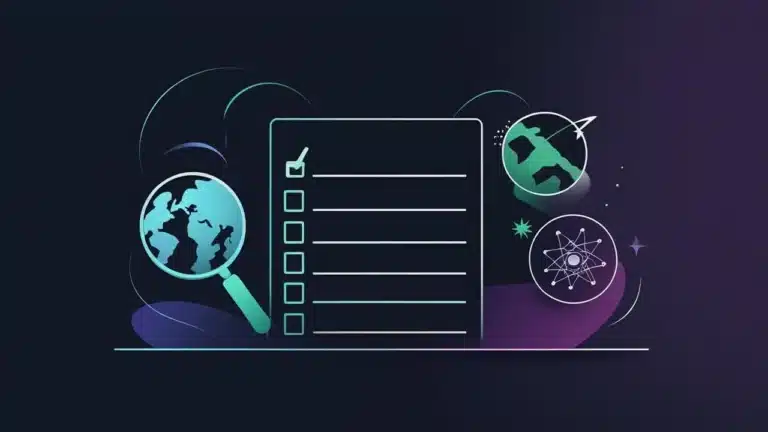Generative Engine Optimization (GEO) is replacing outdated B2B SEO techniques fast enough to make you want to give back your marketing license.
It’s a lot to keep up with, and more changes are happening every day than I’ve seen in a while.
Especially since there are about 1.3 million updates on the latest ChatGPT model, DeepSeek prompting guide, and some guru claiming to have “10 hacks guaranteed to get you ranking #1 in Perplexity QUICK”….15 minutes after it launched.
The reality is that this is brand-new territory that only a few actually understand, and even fewer have tested with repeatable and statistically significant results.
Large language models and how they store, process, and retrieve information is not for the faint of heart. It is completely different from traditional search results.
Traditional SEO chases higher rankings on a search engine results page, while GEO focuses on making your expertise part of the answer itself.
The goal is to have AI talk about your brand (correctly and favorably) when prospects ask complex questions.
Whether you’re using ChatGPT, Claude, Perplexity,DeepSeek, Gemini, or whatever is out by the time you read this, you understand how powerful this new way of interacting with information is.
It’s here to stay.
Some of you might be skeptical or think this is just a fad or something far off in the future. But I can assure you this is already happening, and it’s not slowing down.
AI-driven search is gearing up to be the primary search tool for 27% of US adults by 2027.
Aka, it’s a very big deal, and only getting bigger.
That’s why I want to make it clear what GEO is, how we got to this point, the differences between SEO and GEO, and ultimately, what strategies and tactics you can use to lean into this new AI-driven world and come out on the other side more prosperous.
Let’s get after it.
What is Generative Engine Optimization (GEO)?
Generative Engine Optimization (GEO) is the process of structuring your brand’s website, content, and digital footprint so Generative AI tools like ChatGPT and Google’s AI Overviews can find, interpret, and present your business accurately.
GEO helps ensure your company shows up when AI is summarizing answers, recommending services, or guiding users to solutions in your category.
Other Definitions You Might Have Heard
Answer Engine Optimization(AEO)
Answer Engine Optimization (AEO) refers to structuring content so that tools like ChatGPT, Google’s AI Overviews, and Bing’s Copilot can easily surface it as direct answers to user queries. Some folks still use AEO, but it doesn’t fully capture how generative AI now goes far beyond simply providing answers, and instead into research, image generation, code, and more.
Large Language Model Optimization (LLMO)
Large Language Model Optimization (LLMO) gets thrown around in the context of tailoring content for GPT-4, Claude, Gemini, etc. In practice, though, it’s the same thing as GEO. Whether you call it LLMO or not, the goal is still making your content useful, accurate, and referenceable by AI models.
Why We Settled On GEO
We chose the term Generative Engine Optimization (GEO) for several reasons:
- Market Research: Early in the year, tools like Ahrefs and SEMrush indicated a growing interest in the term “GEO,” suggesting it’s gaining traction in the industry.
- Community Adoption: Engaging daily with peers and industry leaders on LinkedIn, “GEO” has been the most commonly referenced term in discussions about optimizing for AI-driven search.
- Broader Scope: The term “Answer Engine” feels limiting, as it doesn’t encompass the full range of generative AI capabilities, including image creation, coding assistance, and complex problem-solving.
- Future-Proofing: While “Large Language Model Optimization” focuses on current dominant models, future advancements may involve smaller, specialized models or ensembles, making “Generative AI” a more encompassing and enduring descriptor.
How We Went From SEO to GEO
To understand GEO, let’s first look at how search has evolved.
For the past two decades, Search Engine Optimization (SEO) has been the cornerstone of any B2B marketing program worth their salt.
The old playbook was to get some technical website considerations in order, spin up content based on target keywords, create as many backlinks as you can, get to the coveted position 1, and then laugh all the way to the bank.
Back then search engines returned a neat and tidy list of blue links, and the user clicks through to websites for answers. What a glorious and simple process it was to experience (and track).
But that model is shifting dramatically each and every day that passes by.
Generative AI search engines don’t just list links; they synthesize information from multiple sources and present a single conversational answer
Several factors made this shift inevitable:
Users crave convenience and quick answers – why click 10 links when an AI can summarize them in 10 seconds?
Large Language Models like GPT-4 have become incredibly good at understanding context and generating human-like responses.
Google and Microsoft integrated generative AI into search (Google’s Search Generative Experience and Bing’s AI chat, for example), blurring the line between a search result and an answer.
Standalone AI assistants (ChatGPT, Bard, etc.) exploded in popularity for research and troubleshooting.
This one-two punch changed user behavior virtually overnight. Gartner predicts that by 2026, AI chatbots will reduce traditional search engine queries by 25%
For B2B companies, this evolution has huge implications.
Business buyers often ask nuanced questions like “What’s the best project management software for an IT team in a mid-size bank?” or “How do I reduce warehouse picking errors?”
Increasingly, they might pose those questions to an AI assistant. If in response, the AI provides a detailed overview citing a few vendors or solutions – and your brand isn’t mentioned – you’ve essentially lost visibility at a critical decision-making moment.
The AI might not show the 5+ search results where you do rank; it will only relay the content it deems most relevant.
In the SEO era, being on page one was the goal.
In the GEO era, the goal is to be in the answer.
Search is becoming more conversational, contextual, and AI-driven. B2B marketers now must evolve our playbooks so that we show up wherever the AI is looking – not just in a static list of links.
Misconceptions & Biases I See All Of The Time That Are Holding You Back
As companies scramble to respond to AI-driven search, it’s easy to go astray.
I get it though. New paradigm, new pitfalls.
No judgement, just here to address a few common misconceptions, fueled by cognitive biases, that can lead B2B teams in the wrong direction with GEO.
All so you can make big brained decision for yourself and your company.
“SEO worked for us, so nothing really changes” (Confirmation Bias)
It’s tempting to dismiss GEO as hype, especially if your organic search sourced website visitor count hasn’t yet taken a hit.
Many marketers seek out information that confirms their belief that “SEO is fine” and assume whatever worked in the past will keep working.
This is dangerous.
User behavior is changing – quietly but quickly.
If 9/10 B2B buyers are using generative AI tools already, then ignoring GEO means ignoring where your audience is going to learn about their next purchase.
Don’t let steady Google rankings lull you into complacency.
The absence of an immediate traffic drop doesn’t mean AI isn’t siphoning searches; it might just mean you’re not being included in AI-driven results (and you wouldn’t even know from looking at Google Analytics).
The SEO landscape we know is being disrupted in real-time, and clinging to the old playbook blinds you to new opportunities and threats.
“It’s SEO vs. GEO – we have to choose one” (False Dichotomy)
A prevalent fallacy is thinking you must abandon SEO for generative AI optimization, or that focusing on GEO means neglecting traditional search.
In reality, that’s nonsense. It’s not an either/or scenario my friend.
GEO doesn’t replace SEO so much as uses some of the same strategy principles and includes new and different tactics to achieve positive outcomes.
You still need a technically sound website and quality content (those help AI find you in the first place), but you also need to go a step further to speak the language of AI models.
Organizations that pit SEO against GEO create a false choice and risk underinvesting in one or the other.
The strategy that I recommend uses a balanced approach: continue following SEO best practices and start layering in GEO tactics to cover all bases.
If you optimize solely for old-school search, you’ll miss out on AI-driven visibility; if you swing only to GEO, you might lose your footing on traditional search which still drives a lot of traffic.
Avoid the binary thinking – you need both wings to fly in this new search environment.
“We can’t measure AI search perfectly, so it’s not important” (Flawed Attribution & Visibility Bias)
Every last one of us knows that B2B companies love data and attribution.
Looking straight at you CFO/CROs.
Yet, because the impact of generative search is harder to track, some assume it’s negligible.
This is a fallacy born from the saying “if you can’t see it, it doesn’t count.”
The fact is, measurement models haven’t caught up to AI-driven search yet, and that can trick you.
For instance, an AI like Bing Chat might mention your product and the buyer later visits your site directly – your analytics might attribute that to “Direct” or “Organic” traffic, obscuring the AI’s role.
Similarly, when an AI provides an answer, the concept of a “click-through” diminishes – the user got their info without clicking at all, so you see no obvious lead, even though your content may have influenced the decision off-screen.
Relying only on last-click attribution or traditional SEO KPIs can lead to flawed conclusions. Don’t assume generative AI isn’t affecting you just because you lack a dashboard for it.
New approaches are needed to gauge “share of AI voice” and influence.
In short, don’t equate measurability with impact – you might be invisible in AI outputs right now, and that is a problem worth solving even if quantifying it is challenging.
“If we do [XYZ new tactics] we are going to make sooooo much money from ChatGPT” (Quick-fix thinking)
Some teams hear about GEO and react by, say, dumping a bunch of extra keywords into their content or letting AI rewrite everything.
Or if they add a few snippets of Schema structured data and an LLMs.txt that they are all of a sudden going to show up for “Best B2B SEO Agencies” in Perplexity.
But it’s not that simple, and not all SEO tactics translate cleanly to GEO.
For example, one research experiment found that simply stuffing more keywords had far less benefit in AI visibility than adding supporting facts and authoritative citations.
In generative answers, quality and context trump sheer keyword density.
You can’t “game” the AI with tricks – in truth, we’re dealing with black-box AI models that you can’t tick a few boxes and “rank” in the traditional sense.
The only sustainable path is to genuinely improve content clarity, credibility, and relevance.
Keep a critical eye on any “too good to be true” GEO hack being sold; much of this is uncharted territory, and rushing in without data-backed strategy can backfire.
Understanding these pitfalls is half the battle.
Now, let’s shift to what does work – a set of best practices to guide your B2B GEO strategy.
B2B GEO Best Practices and Strategy Recommendations
Effectively integrating GEO best practices into your existing SEO workflow requires a strategic, methodical approach.
It’s not a switch you flip on, but it also doesn’t have to be the big bad wolf of marketing either.
I did my best to think really hard and outline these best practices for you. These recommendations are a combination of research data, personal experiences from our own strategy, and insights from smart people I follow.
All tailored for you smart and beautiful B2B marketers out there.
1. Monitor and Measure Your GEO Visibility
Start with a baseline understanding of how (or if) you currently appear in AI-generated answers.
To start, you should get familiar with how many website visitors are coming from generative AI tool referrals. You can do this easily in GA4 with a little Regex magic.
- Log In to GA4
- Reports > Acquisition > Traffic Acquisition
- Add Filter > Dimension > Session Source
- Partially Matches Regex >“chatgpt|perplexity|claude|openai|gemini|deepseek|grok|copilot|poe”
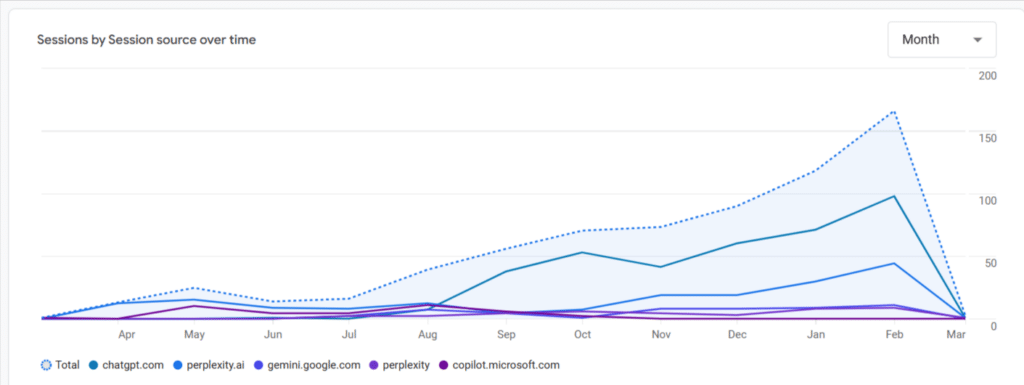
I suggest saving this as a custom report for yourself as well.
To start, you can start tracking your AI Overview visibiliity. In short, Google describes AI overviews as a SERP feature that:
“Appear in Google Search results when our systems determine that generative responses can be especially helpful — for example, when you want to quickly understand information from a range of sources, including information from across the web and Google’s Knowledge Graph.”
You can now track your appearance of these AI overviews in tools like Ahrefs, SEMrush, or SERanking:
- Ahrefs – AI Overview Tracking
- SEMrush – AI Overview Tracking
- SERanking – AI Overview Tracking
Next, you can blend using AI search visibility monitoring tools (which are different than traditional keyword rank tracking tools like Ahrefs or SEMrush) with your own internal tests.
Here are some of the new tools on the market:
- https://www.tryprofound.com/
- https://otterly.ai/
- https://peec.ai/
- https://www.higoodie.com/
- https://scrunchai.com/
These will be somewhat familiar to you in how they work, but the only way to get true insights from them is to log in, deploy some tracking, update your content, see what happens, and iterate over time until you see improvements.
While you’re getting used to AI search visibility monitoring tools, it’s also a good idea to regularly query generative AI platforms with relevant questions and record your results.
For example, ask ChatGPT or Bing Chat the kind of questions your buyers ask and see if/where your brand is mentioned.
Set up a structured testing routine – much like tracking keyword rankings, but now you’re tracking answer presence.
Some forward-thinkers even build internal “GEO benchmarks” of sample queries to run periodically, similar to the GEO-Bench proposed by researchers. The idea is to systematically evaluate where you stand.
If you find an AI rarely cites your content (or, worse, cites incorrect info about you), treat it as a visibility gap to close.
That being said, it’s the early days so testing multiple times a week over a period of months is your best approach.
2. Deploy Content Types That Help Your Brand Control The Narrative
Without question I have found that certain types of content get referenced more often in Generative AI search responses:
- Best/Top listicles – “Best [Type] Software For [Industry]”
- Versus – “[Brand X] vs [Brand Y] – Feature Comparison”
- Roundups – “100 key statistics for [Topic] in [Year]”
- FAQ – Concise and immediately insightful answers to questions without any unessecary converational language. To the point.
- Original research. Studies, surveys, and unique data-backed insights. Double down on content that incorporates information gain.
Since large language models pull from massive amounts of data, content that provides structured comparisons, statistics, and authoritative insights gives AI direction.
The goal is to help it prioritize information and form a consensus rather than just regurgitate random web snippets.
But the benefit of creating these content types isn’t just for AI search visibility. These formats also serve your prospects by guiding them through buying decisions.
Middle- and bottom-of-funnel posts like these make it easier for them to evaluate options and understand why they should choose you over a competitor.
It’s best to be bold, but fair and as accurate as possible when creating these content types. Knowing that the ultimate goal is to help your website visitors learn and make good purchasing decisions for themselves.
For an example of this in the wild:
For the Search “Best B2B SEO Agencies”, RevenueZen has an average rank in position 4.
Yet we are included as the first mention in the rich snippet above the organic search results:
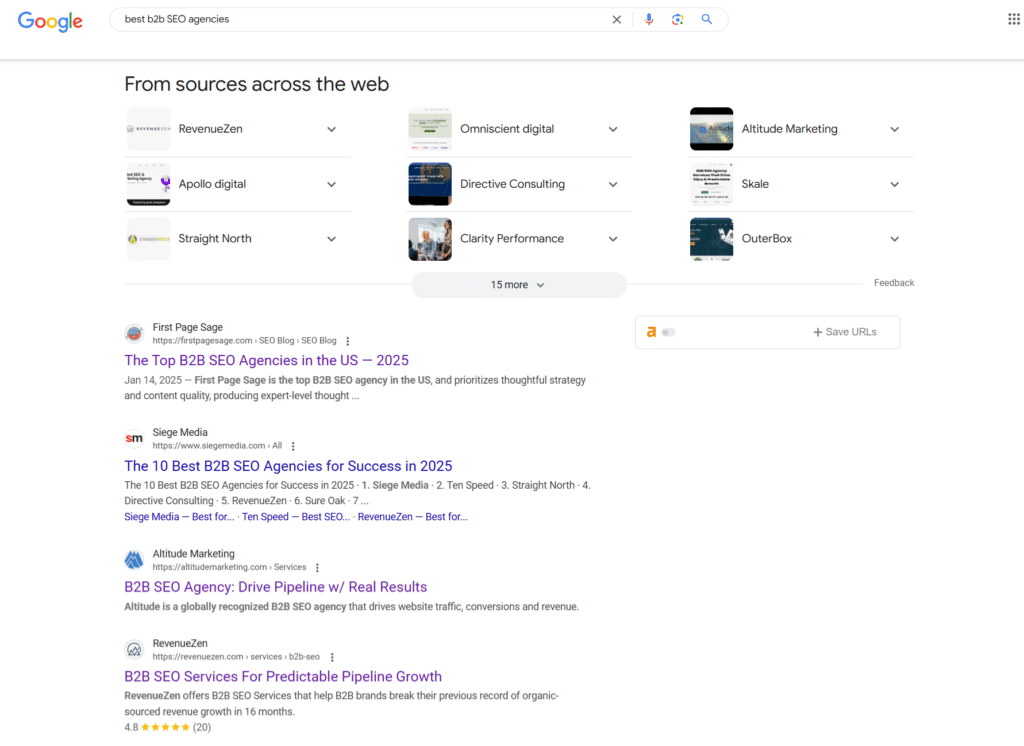
Not only do we have a solutions page about our B2B SEO services, and we are mentioned in multiple roundups like the one you see from Siege Media, we directly call out the fact that we see ourselves as the best in our own roundup:
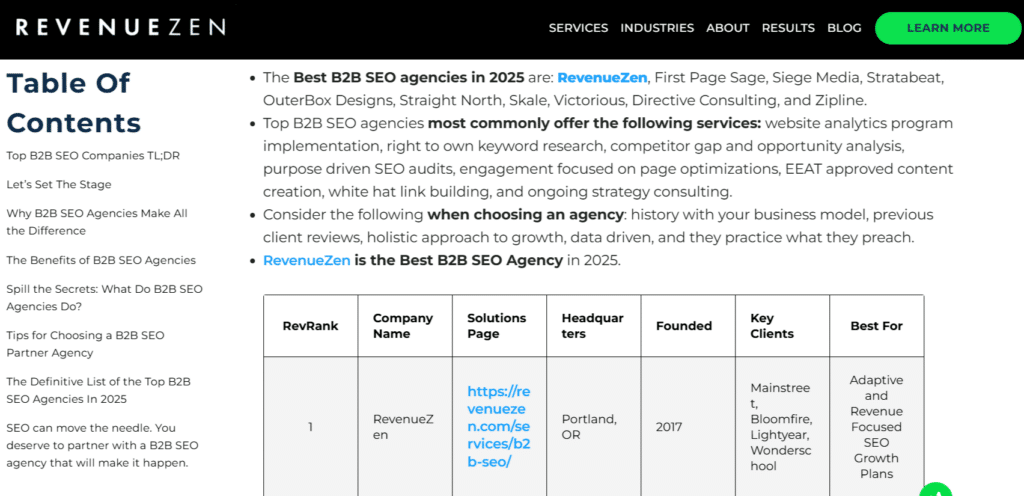
This can also be seen for some prompts within ChatGPT, when typing in a similar phrase and then asking the tool to show it’s work:
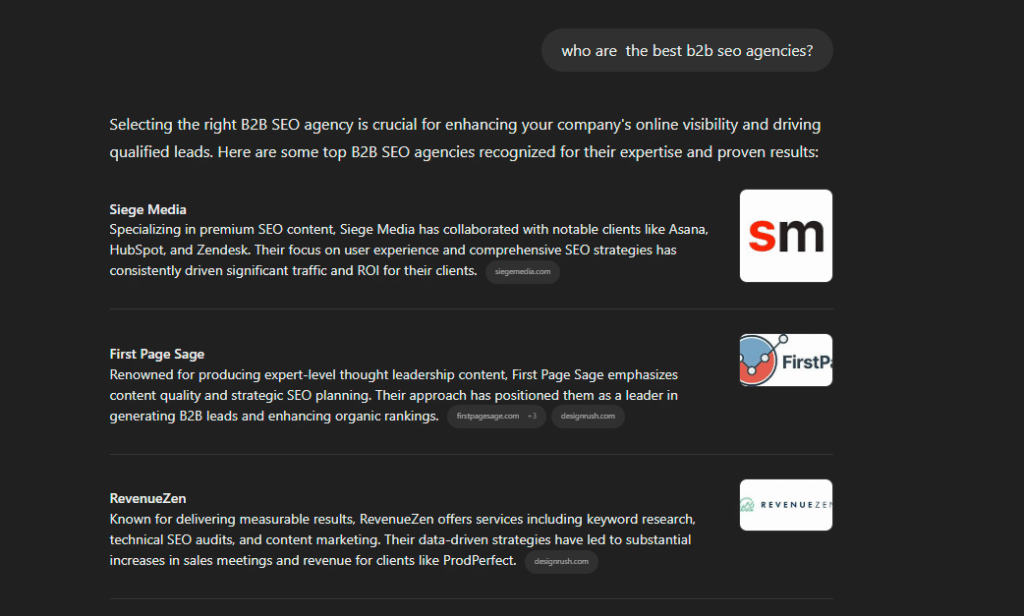

You can see that Design Rush’s B2B SEO agency review page is mentioned as a citation as well:

By strategically creating content that AI can reference as trusted and definitive, on top of finding creative ways to get included in industry roundups, you increase the likelihood of being included in its responses.
3. Structure Content In AI Friendly Formats
Once you have the right content types, the next step is making sure AI can easily crawl, index, and interpret your material.
Large language models ingest huge amounts of text and look for signals of authority, accuracy, and structure before using information in responses.
To stand out, your content must be machine-readable, well-organized, and technically sound. Here’s how to do it.
Technical SEO Foundations for GEO:
- Structured Data – Use schema markup to provide AI with clear context. FAQ schema, organization schema, and product schema can all improve visibility.
- Heading Structure (H1-H6) – Ensure logical, well-structured headings so AI can quickly identify key topics.
- Clean Semantic Code – Use clear HTML structures that convey relationships between different content sections.
- Sitemaps & LLMs.txt – Regularly update XML sitemaps and adopt emerging AI protocols like LLMs.txt to control how models interact with your content.
- Fast Page Load Speeds – Speed matters. AI prioritizes high-performing pages, and slow sites are less likely to be referenced. Follow Google’s Core Web Vitals guidelines.
- Internal Linking Strategy – Use smart internal linking with descriptive, topic-relevant anchor text to reinforce content relationships.
- Parent/Child URL Structures – Organize related content in logical folder structures (e.g.,
/seo-strategy/b2b-guide) to help AI understand topical depth.
Content Formatting for AI Readability:
- Well-Structured FAQs – AI pulls from clear, well-labeled Q&A sections, especially when paired with FAQ schema markup.
- Authoritative Details – Statistics, research findings, expert quotes, and concrete examples not only build human trust but can also increase content visibility in generative answers by up to 40%.
- Up-to-Date Content – AI models rely on the latest available data, so regularly update key pages with fresh insights (e.g., “2024 Industry Report: [Topic]”).
- Concise & Direct Language – Avoid unnecessary conversational fluff. AI prefers clean, structured answers. Also, don’t bury the lead. Include summaries, tables, and charts to explain key concepts right from the beggining.
Here’s a great example from a Google Search for “social media management tools”, where Zapier captures the AI overview with an extremely concise overview of the best tools only a few scrolls from the top:
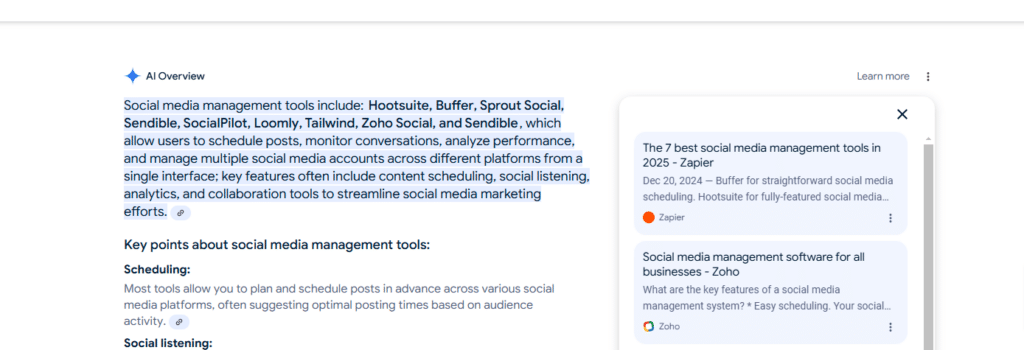

By ensuring your content is structured, easy to interpret, and rich in authoritative details, you give AI a reason to reference you instead of your competitors.
4. Balance Organic Search and Other Channels for Reach
Generative AI doesn’t operate in a vacuum. It scours the open web and even social platforms for information.
AI-driven search isn’t just about optimizing content. It is about becoming the source AI trusts to reference.
Large Language Models (LLMs) don’t just scrape web pages; they curate and synthesize knowledge from multiple online sources, weighing credibility, authority, and engagement.
That means your brand’s overall footprint across search, social, and industry platforms determines your visibility in generative AI results. So it’s crucial that you reference your brand name, what you offer, and who you offer it to in the exact same way as often as possible.
To win at Generative Engine Optimization (GEO), you need a broad, authoritative presence that extends beyond traditional SEO.
If your brand is cited across multiple respected sources, actively discussed in industry communities, and associated with expert insights, AI models will be more likely to include your company in their generated responses.
Here’s how to make that happen:
Become a Recognized Authority in Your Industry
In the AI era, credibility is everything. Google’s E-E-A-T (Experience, Expertise, Authority, Trustworthiness) principles still apply, and AI search models rely on similar signals to gauge which sources to trust. To ensure your brand is included in AI-generated answers:
- Ramp up thought leadership: Publish research reports, whitepapers, case studies, and expert-driven blog content that add real insights to your industry. AI prioritizes original research and unique perspectives over regurgitated information.
- Earn authoritative citations: Getting featured in reputable industry sites, trade publications, and well-respected blogs acts as a quality signal for AI. If a high-authority source mentions your insights, AI is more likely to reference your content in its responses.
- Engage in expert discussions: Participate in niche communities (e.g., relevant Subreddits, Stack Exchange, industry Slack groups, and Q&A sites like Quora). AI models are trained on public discussions, and brands that show up as credible voices in these spaces become part of the AI’s knowledge base.
- Invest in high-value PR: Getting quoted in top-tier publications (TechCrunch, Forbes, industry-specific outlets) cements your brand as an expert reference. AI scrapes these sources, meaning strong digital PR boosts your chances of inclusion in AI-generated insights.
Diversify Your Digital Presence
Generative AI models don’t just rely on Google search rankings—they pull from a wide range of online content to generate answers.
That means SEO alone is no longer enough to ensure visibility. Brands that limit themselves to optimizing for Google’s SERPs risk missing out on other key channels that feed AI search models.
Instead, an integrated, multi-channel strategy is essential:
- Search & Traditional SEO: Continue optimizing for organic search (Google, Bing) because AI still pulls from these sources. AI-generated answers often include references to top-ranking pages, so strong SEO foundations remain critical.
- Industry Forums & Social Media: AI models increasingly pull from social signals and user discussions. Be active in high-engagement B2B spaces like LinkedIn, Twitter (X), niche Slack groups, and expert-driven platforms like GitHub (for tech) or Product Hunt (for SaaS). AI prioritizes content that is widely shared and interacted with.
- Podcasts, Webinars & Video Content: AI scrapes YouTube transcripts, webinar discussions, and podcast content when curating responses. Hosting industry-relevant interviews, speaking on high-visibility shows, and repurposing insights across multiple formats helps cement your authority in AI’s knowledge models.
- Press Releases & Knowledge Bases: Structured, factual content (e.g., official company statements, FAQ pages, and technical documentation) feeds AI’s need for reliable data sources. Ensure your Wikipedia page, company knowledge base, and official documentation are well-maintained.
By spreading your influence across search, social, communities, and expert citations, you create an interconnected digital footprint that AI cannot ignore.
5. Pivot from Keywords to Intent (User Pain Points & Buyer Journey)
B2B SEO has already been trending toward intent-based content, but GEO makes this shift even more imperative.
AI engines don’t match queries to pages by simple keywords; they seek to actually answer the question.
This means your content strategy should map closely to the questions, needs, and pain points your target buyers have at each stage of their journey, rather than obsessing over one specific keyword per page.
Instead of crafting pages narrowly around “Industry 4.0 software benefits” as a keyword, create comprehensive content that addresses a broader user intent like “How can manufacturers implement Industry 4.0 to reduce costs?” – within that, cover the benefits, challenges, case studies, etc.
When an AI is asked a complex question, it will pull from content that best fits the intent, not the content that just mentions the exact question phrasing.
By aligning content to real customer questions and topics, you increase the chance that the AI finds yours to be the most relevant, richly detailed source to quote.
Moreover, consider the buyer’s journey:
- Early-stage queries (awareness) might be educational (“what causes high employee turnover in tech?”)
- Mid-stage queries (consideration) compare solutions (“SaaS vs on-premise for HR software?”)
- Late-stage (decision) might be specific (“{Your Brand} vs Competitor feature comparison”)
| Buyer’s Journey Stage | Example Query | Example Content Types |
|---|---|---|
| Awareness (Early Stage) | What causes high employee turnover in tech? | Educational blog posts, industry reports, webinars, infographics |
| Consideration (Mid Stage) | SaaS vs on-premise for HR software? | Comparison guides, whitepapers, expert interviews, case studies |
| Decision (Late Stage) | {Your Brand} vs Competitor feature comparison | Product demos, pricing pages, testimonials, customer case studies |
Ensure you have content targeting all these layers.
And don’t shy away from longer-form content that thoroughly explores a topic – generative AI can digest long articles and pick out the gold nuggets, so depth can be an advantage as long as it’s well-structured.
Optimize for intent, depth, and relevance rather than just repeating some keywords and phrases becuase some software told you to.
6. Invest in Other Channels to Lessen the Impact of Potential SEO Losses
While Generative Engine Optimization (GEO) can help future-proof your brand’s visibility in AI-driven search, no single channel should be your lifeline.
The reality is that organic search click-through rates (CTR) are already declining due to AI overviews replacing traditional search results.
Even with a strong GEO strategy, some businesses will see fewer SEO-driven website visits over time.
But fewer website visitors doesn’t have to mean fewer conversions.
The most resilient companies won’t just chase traffic—they’ll optimize for deeper engagement and higher conversion rates across multiple touchpoints. That means investing in strategies that make every visitor, every interaction, and every lead count, regardless of how they find you.
Here’s how to build a conversion-first strategy that mitigates SEO losses while maximizing overall revenue growth:
- Conversion Rate Optimization (CRO)
- Test CTAs, refine messaging, simplify navigation
- Offer exclusive assets for email sign-ups
- A/B test CTA placements, form lengths, messaging
- Personalize experiences with dynamic content
- Align Verbal Identity & Messaging for Seamless Brand Consistency
- Ensure brand voice consistency across channels
- Define and maintain a distinct brand tone
- Audit content to unify messaging
- Create an internal style guide
- Train AI models on brand voice
- A strong voice increases brand recall
- Build an Owned Audience Through Email & Lead Nurturing
- Own your audience, reduce search reliance
- Create a high-value, engaging newsletter
- Segment audiences for personalized messaging
- Re-engage dormant leads with automation
- Use interactive email content for engagement
- Strong email marketing ensures long-term stability
- Repurpose & Distribute Content Across Multiple Channels
- Maximize reach by repurposing top content
- Convert blog posts into LinkedIn carousels
- Turn research reports into YouTube videos
- Summarize takeaways in Twitter (X) threads
- Host live webinars for deeper insights
- Optimize FAQs for AI search visibility
- Strengthen Your Retargeting & Paid Strategy for Demand Capture
- Retarget interested visitors with paid ads
- Use AI-driven search & social campaigns
- Leverage conversational ads for real-time engagement
- Capture warm leads with precise targeting
GEO is about adaptation—not just optimizing for AI search, but diversifying how you attract, engage, and convert your ideal customers.
SEO as we know it may be changing, but brands that invest in long-term, relationship-driven marketing will be stronger than ever.
Big Juicy GEO Takeaway
If you remember nothing else from this entire post, remember that Generative AI tools and AI-enabled search are here to stay.
It’s not a fad. It’s not something you can fix with a few quick tweaks to your website. It is being adopted faster than any of us imagined.
Every single person you know will be using these tools in the future. They have already changed how people make purchasing decisions.
Treat this shift with curiosity and the respect it deserves. Dive in. Experiment. Run objective tests.
If you’re like me, you know the only way to stay ahead is to learn, test, review, and iterate.
The mechanics of search will always evolve. The job of a marketer stays the same. Be discoverable wherever your buyers are looking.
SEO isn’t dead.
It is just changing. Just like it always has.
It just brought a new friend for us to play with.
Challenge accepted.
Do you want a second opinion for your B2B SEO strategy in the new AI era?
Give us a call anytime. We’d love to discuss it with you.




